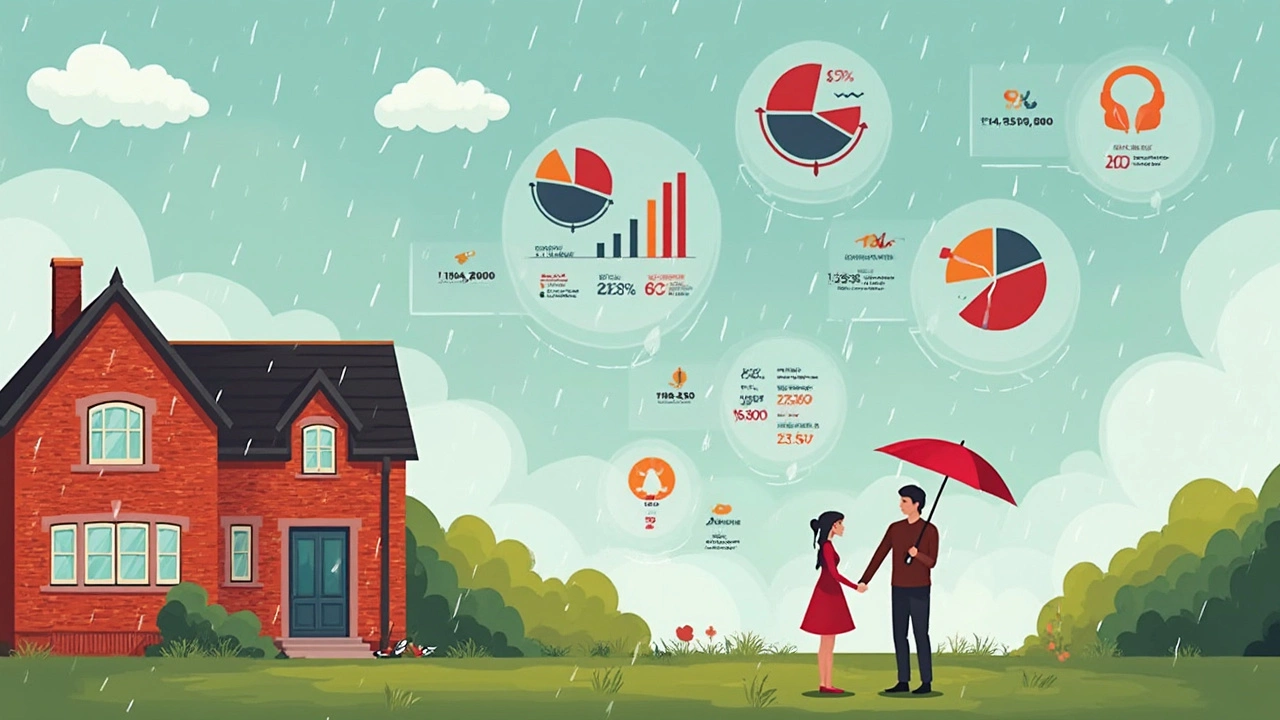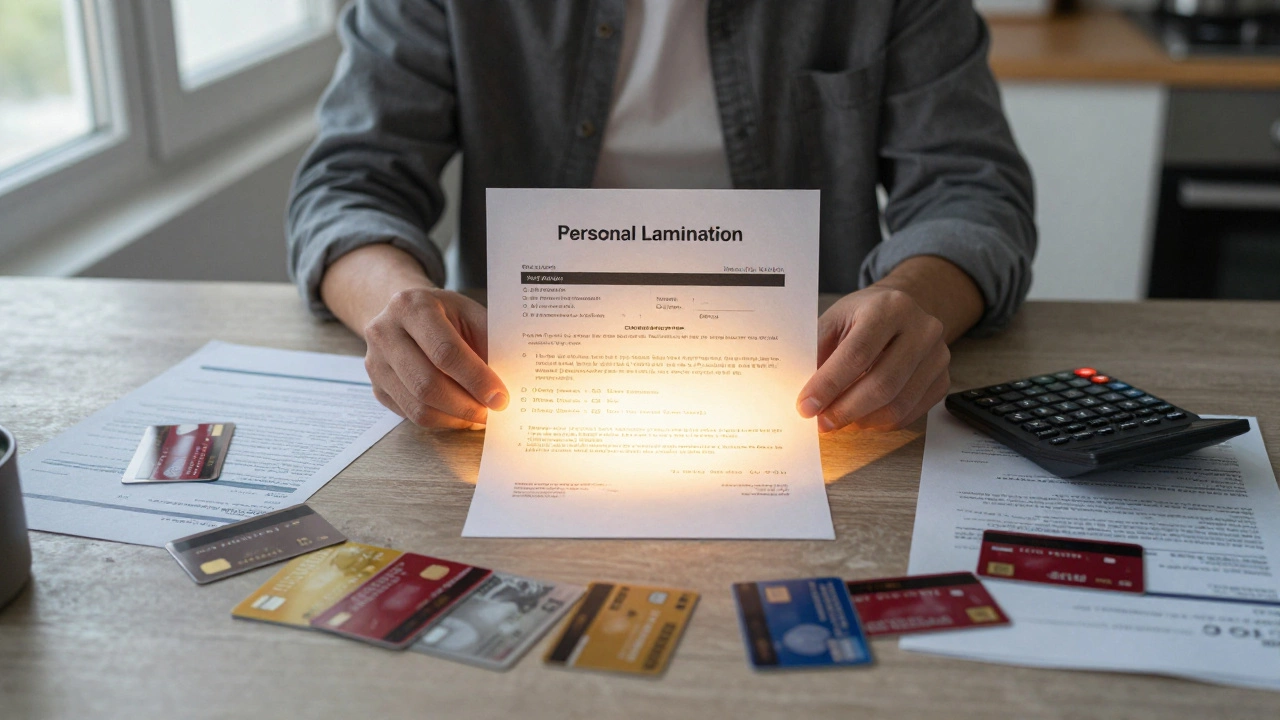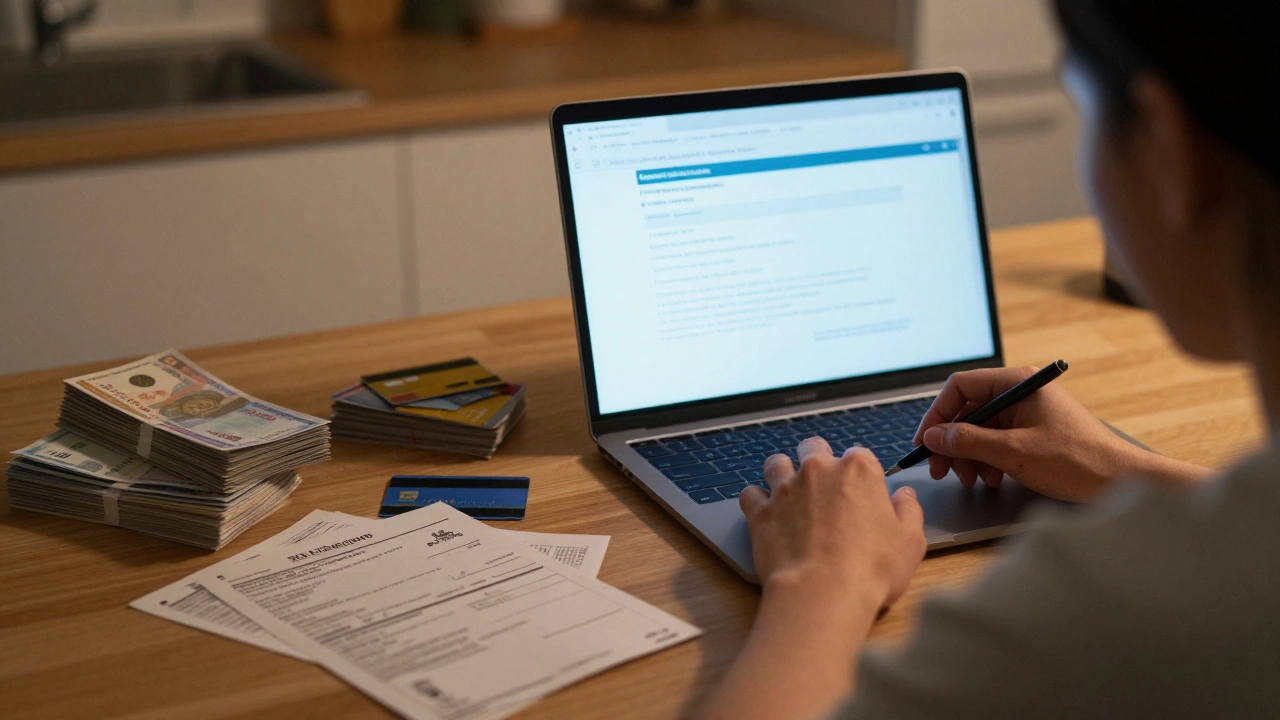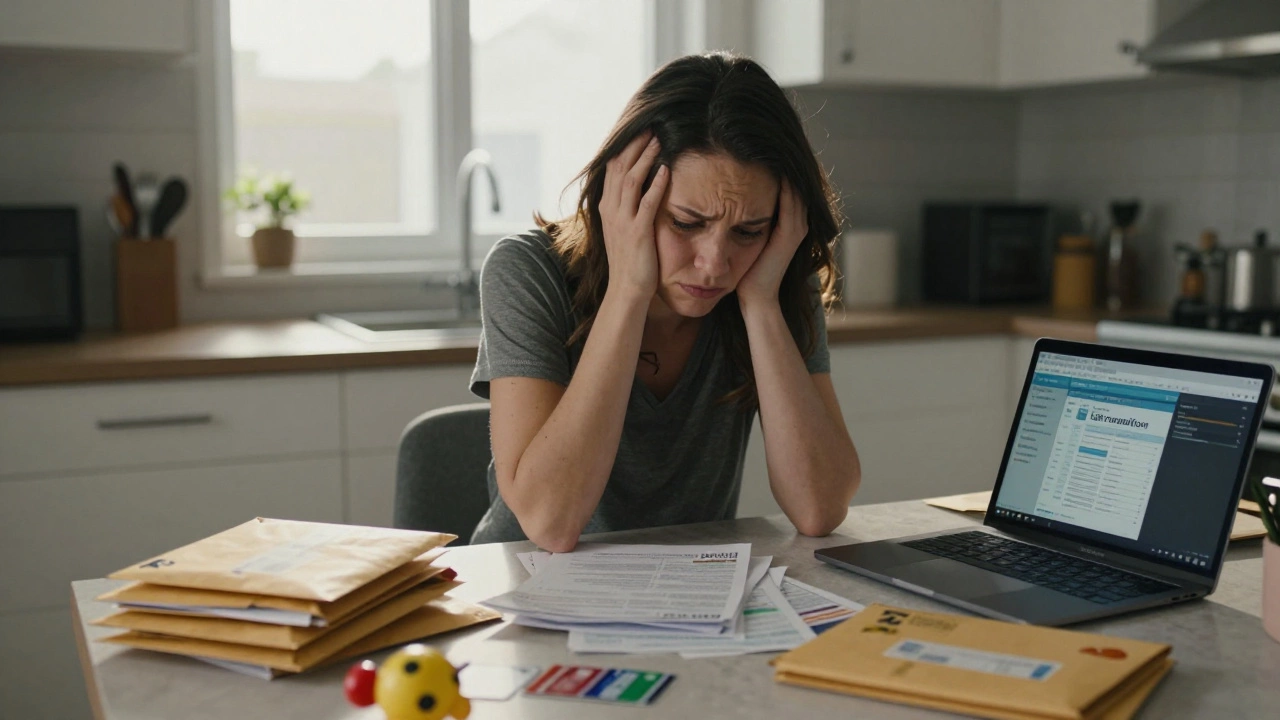Got your eyes on a $150,000 mortgage? You’re probably wondering, 'How much will I actually be shelling out each month?' Let’s break it down in simple terms. Your monthly payments aren’t just a random number. They’re influenced by, you guessed it—the interest rate and loan term. So, understanding these two is key.
Most folks start with what's called a fixed-rate mortgage. Basically, it's like getting your favorite ice cream every month at the same price. Predictable and stable, this type of mortgage doesn't surprise you with sudden hikes. However, its counterpart, the adjustable-rate mortgage, could be more like a roller coaster—low payments at first, but they can climb.
Now, imagine borrowing $150,000 at an interest rate of, say, 4%. If you opt for a 30-year term, you’re looking at roughly $716 a month. Shorten that to 15 years, and you're speeding things up to around $1,110 a month. Quite a leap, right?
Here’s a cool trick: Tossing extra cash towards your loan's principal can shave off years of payments. But remember, it’s all about balancing what you can afford now and what you want saved tomorrow.
- How Mortgage Payments Are Calculated
- Factors Affecting Your Monthly Payment
- Comparing Loan Terms
- Tips to Lower Your Payments
- Understanding the Impact of Interest Rates
How Mortgage Payments Are Calculated
Ever wonder how those monthly payments on your $150,000 mortgage are figured out? It's not some mysterious magic, I promise. Let's break it down.
Principal and Interest
Your mortgage payment has two main parts: principal and interest. The principal is basically the money you borrowed in the first place. The interest is what the bank charges you for lending you that money. Over time, as you pay off the principal, the interest part of your payment shrinks.
Formula for the Calculations
Okay, let’s get a bit technical. Your monthly mortgage payment is calculated using a formula that takes into account the loan amount, the interest rate, and the number of payments. Sounds like a lot, but here's the equation:
M = P[r(1+r)^n] / [(1+r)^n–1]
- M is your monthly payment.
- P is the loan principal (in our case, $150,000).
- r is your monthly interest rate (annual rate divided by 12).
- n is your number of payments (30 years times 12 months for a 30-year mortgage).
Plug in these numbers, and you've got your payment! But no worries if math isn’t your thing; mortgage calculators online do the heavy lifting.
Amortization Schedule
Ever heard of an amortization schedule? It's like a roadmap showing the breakdown of each payment over the life of your loan. In the early years, most of your payment goes to interest. Over time, more of it chips away at the principal.
Breaking Down a Real Example
Let's say you've got that 4% interest rate. For a $150,000 mortgage over 30 years, that’s around $716. But if you opt for a 15-year term instead, it jumps to about $1,110. Shorter terms mean you pay less total interest, but your monthly payments are higher.
Understanding this stuff gives you more control. You can tweak the numbers and see how different rates or terms impact you. It’s all about finding the balance that fits your budget.
Factors Affecting Your Monthly Payment
Let’s dig a bit deeper into what affects your monthly payments for a $150,000 mortgage. It’s not just about picking a number out of thin air. Several key things play a role.
Interest Rate
First up, interest rates. The rate you lock in can make a world of difference. Picture this: for every 1% rate increase, your monthly payment can jump significantly. If you haven’t locked in your rate, know they can change quite quickly.
“Interest rates have probably had more direct impact on household finances than any other single aspect of the mortgage market.” — Freddie Mac
Loan Term
Loan terms are next on the list. A 30-year term spreads your payments over more time but can rack up more interest by the end. Meanwhile, a 15-year term might press you for higher monthly payments, but in the long run, you’re saving on interest.
Down Payment
If you can drop a bigger down payment, you’ll lower your loan amount and, of course, your monthly bill. For instance, putting 20% down not only shaves off what you owe monthly but often dodges the cost of private mortgage insurance (PMI).
Private Mortgage Insurance (PMI)
Speaking of PMI, if your down payment is under 20%, lenders generally require you to pay PMI, which can be an extra burden on your monthly expenses.
Property Taxes and Homeowners Insurance
Lastly, don’t forget those pesky property taxes and insurance. Depending on your location, taxes can vary, and they’re typically rolled into your mortgage payment. Insurance is the same story if you're in an area prone to natural disasters, anticipate a higher premium.
All these factors collectively define how heavy or light your payments feel each month. Knowing what tweaks you can make or where you can save is crucial in crafting monthly payments that align with your budget and long-term plans.
| Factor | Impact on Payment |
|---|---|
| Interest Rate | Higher rate = higher payment |
| Loan Term | Longer term = lower payment |
| Down Payment | Higher down = lower loan amount |
| PMI | Added to payments if down is under 20% |
| Taxes/Insurance | Included in payments, varies by location |

Comparing Loan Terms
When it comes to mortgage terms, you’ve got options! The most popular choices are the 15-year and 30-year terms, and each has its own set of perks and downsides. Let’s break it down so you can see which might work best for you. After all, your monthly payments depend a lot on this choice.
The Classic 30-Year Loan
The 30-year mortgage is like that old reliable car—steady and predictable. It's probably the most common choice, and there's a reason for that. The main advantage? Lower monthly payments, which means you’ve got more left over to spend or save. But keep in mind, you’ll end up paying more interest over the life of the loan.
The Speedy 15-Year Loan
Shooting for the 15-year loan is like taking the express lane. Your house gets paid off faster, and you save loads on interest in the long run, which is pretty awesome. The flip side? Your payments will be higher every month, which could stretch your budget.
Take a look at this example table to see how the numbers shake out:
| Loan Term | Monthly Payment | Total Interest Paid |
|---|---|---|
| 30-Year | $716 | $107,447 |
| 15-Year | $1,110 | $49,715 |
Choosing What Works for You
So, which side do you fall on? The 30-year loan might give you room to breathe each month, but if you're itching to be debt-free and can handle the extra cost, the 15-year might be your jam. It’s really about what suits your lifestyle now and what you envision for the future.
“Choosing the right mortgage term is about aligning with your financial goals—whether you value cash flow or paying off your home quickly,” says Jane Doe, a finance specialist with Housing Today.
Whatever you decide, make sure it’s something that aligns with both your short-term and long-term financial dreams. Remember, it’s not just about owning a home—it's about living comfortably in it.
Tips to Lower Your Payments
When it comes to saving some cash on that mortgage, every penny matters, right? Here are a few tricks that can help lighten the load of your monthly payments.
1. Boost Your Credit Score
Your credit score isn't just a number—it’s a big player in getting you a lower interest rate. Before applying for or remortgaging, ensuring your score is in great shape can make a real difference. Pay off those tiny lingering debts and keep your credit utilization low. It's the little things that count!
2. Shop Around for Lenders
Don't just settle for the first mortgage offer that lands in your lap. Different lenders offer different rates and terms. It’s like dating—check out a few options before committing. Get quotes from multiple lenders to find the one that fits your needs best.
3. Increase Your Down Payment
The more you put down initially, the less you have to pay back. If possible, increasing your down payment will decrease the principal. This means a lower monthly bill and probably a better interest rate too. It’s a win-win.
4. Consider Refinancing
If the current rates are lower than what you’ve got, it might be worth looking into refinancing your $150,000 mortgage. This could lower your interest rate and, in turn, your monthly payments. However, keep in mind the fees associated with refinancing to ensure it truly saves you money in the long run.
5. Cut Out Private Mortgage Insurance (PMI)
Ditching PMI payments is a sure way to chop your bills. Typically, you can drop PMI once you’ve built up 20% equity in your home. Just make sure to contact your lender about canceling it once you’re eligible.
Who doesn't love saving money? Implementing one or more of these tips can help you manage your budget more comfortably while staying on track with your mortgage goals. Happy saving!

Understanding the Impact of Interest Rates
Interest rates are like the secret ingredient in your mortgage recipe—they affect how much you pay monthly and over the life of your loan. Here's the scoop.
When you’re talking about a mortgage, the interest rate can dramatically alter your monthly payment. For instance, a 1% increase on a typical $150,000 mortgage can bump up your monthly payment by nearly $100 in some cases. That’s a decent chunk of change!
What influences these rates? The general health of the economy plays a big role. In times of economic growth, rates tend to rise. When the economy slows down, rates often dip to encourage borrowing. According to Freddie Mac, "The mortgage rates are influenced by the inflation rate, the growth of the economy, and changes in the jobs market."
"The mortgage rates are influenced by the inflation rate, the growth of the economy, and changes in the jobs market." - Freddie Mac
Fixed rates versus adjustable rates? Fixed stays the same throughout the term, offering predictability. Adjustable starts low and adjusts—sometimes up—periodically based on market conditions.
What You Can Do
Keep an eye on market trends. If rates are projected to rise, locking in a fixed-rate soon might save you money. Alternatively, if rates are falling, you might explore an adjustable-rate option.
- Compare lender offers – Rates can vary, so shop around.
- Improve your credit – A better credit score often leads to a better rate.
- Consider refinancing – If rates drop considerably, refinancing could lower your monthly costs.
The key takeaway? The interest rate isn't just a number—it's a significant factor that determines your long-term financial commitment. Being informed and strategic about it can save you thousands over the life of your loan.








